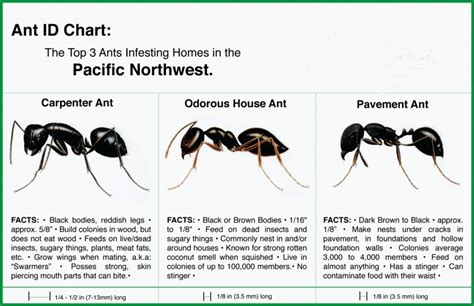Moisture Ants vs. Carpenter Ants: Know the Difference
Ants in your home are never a welcome sight, but identifying the specific species is crucial for effective pest control. Two common culprits often confused are moisture ants and carpenter ants. While both can cause significant damage and disruption, their habits and the methods used to eradicate them differ greatly. This comprehensive guide will delve into the key distinctions between moisture ants and carpenter ants, enabling you to identify the invaders and choose the appropriate course of action.
What are Moisture Ants?
Moisture ants, also known as dampwood ants or odorous house ants ( Tapinoma sessile), are small, dark brown or black ants, typically measuring around 1/16 to 1/8 inch in length. Their name is quite descriptive; they thrive in damp, humid environments. Unlike carpenter ants, they don't actually eat wood. Instead, they forage for sugary substances like sweets, grease, and decaying organic matter. Their presence often indicates a moisture problem within your home, such as leaky pipes, condensation, or water damage.
How to Identify Moisture Ants
- Size: Small, generally under 1/8 inch long.
- Color: Dark brown to black.
- Odor: They emit a characteristic musty or rotten coconut odor when crushed.
- Habitat: Found in damp, humid areas, often near leaks or decaying materials.
- Diet: Sugary substances, grease, decaying organic matter.
What are Carpenter Ants?
Carpenter ants (Camponotus species) are significantly larger than moisture ants, ranging from 1/4 to 1/2 inch long. They are often black, red, or a combination of both colors. While they don't eat wood like termites, they excavate nests within wood structures, causing considerable damage. Carpenter ants prefer damp wood, but a moisture problem isn't always a prerequisite for their presence. They are attracted to wood that is soft, decaying, or already damaged.
How to Identify Carpenter Ants
- Size: Large, typically 1/4 to 1/2 inch long.
- Color: Black, red, or a combination of both.
- Odor: They don't have a distinct odor like moisture ants.
- Habitat: Nest within wood structures, often in damp but not necessarily water-damaged wood.
- Diet: Diverse diet including other insects, honeydew, and sugary substances.
Moisture Ants vs. Carpenter Ants: A Comparison Table
| Feature | Moisture Ants (Tapinoma sessile) | Carpenter Ants (Camponotus species) |
|---|---|---|
| Size | Small (1/16 - 1/8 inch) | Large (1/4 - 1/2 inch) |
| Color | Dark brown to black | Black, red, or bicolor |
| Odor | Musty or rotten coconut | None (or faint) |
| Wood Damage | No, they don't eat wood | Yes, they excavate nests in wood |
| Habitat | Damp, humid areas | Damp or damaged wood |
| Diet | Sugary substances, grease | Insects, honeydew, sugary substances |
How to Get Rid of Moisture Ants and Carpenter Ants
The approach to eliminating these two ant species differs considerably:
Getting Rid of Moisture Ants
Targeting moisture ants involves two key steps:
- Eliminate Moisture Sources: Repair leaks, fix drainage problems, and reduce humidity. This removes their habitat and food source.
- Baiting: Use ant baits containing borax or other insecticides. These are more effective than sprays as they target the entire colony.
Getting Rid of Carpenter Ants
Eliminating carpenter ants is more complex and often requires professional intervention:
- Locate the Nest: This can be challenging, as nests can be hidden within walls or structural timbers.
- Professional Treatment: Professionals use a combination of techniques, including targeted insecticide application and baiting, to effectively eliminate the colony. This is especially crucial for large infestations.
Frequently Asked Questions
What attracts ants to my home?
Ants are primarily attracted to food and water sources. Crumbs, spills, pet food, and leaky pipes all provide attractive conditions.
Are carpenter ants dangerous?
Carpenter ants themselves aren't dangerous in the sense that they don't sting or bite aggressively. However, their nests can weaken wooden structures, leading to potential structural damage.
How can I prevent ants from entering my home?
Seal cracks and crevices in walls and foundations, store food properly, clean up spills immediately, and address any moisture problems promptly.
What is the best way to kill carpenter ants?
For large infestations, professional pest control is recommended. They possess the expertise and tools for effective elimination. For smaller infestations, baits can be effective.
This detailed guide helps distinguish between moisture ants and carpenter ants, allowing for effective control strategies. Remember, early identification and prompt action are key to preventing significant damage and infestation. If you are unsure about the type of ant you have or if you're dealing with a large infestation, consulting a professional pest control service is always recommended.

